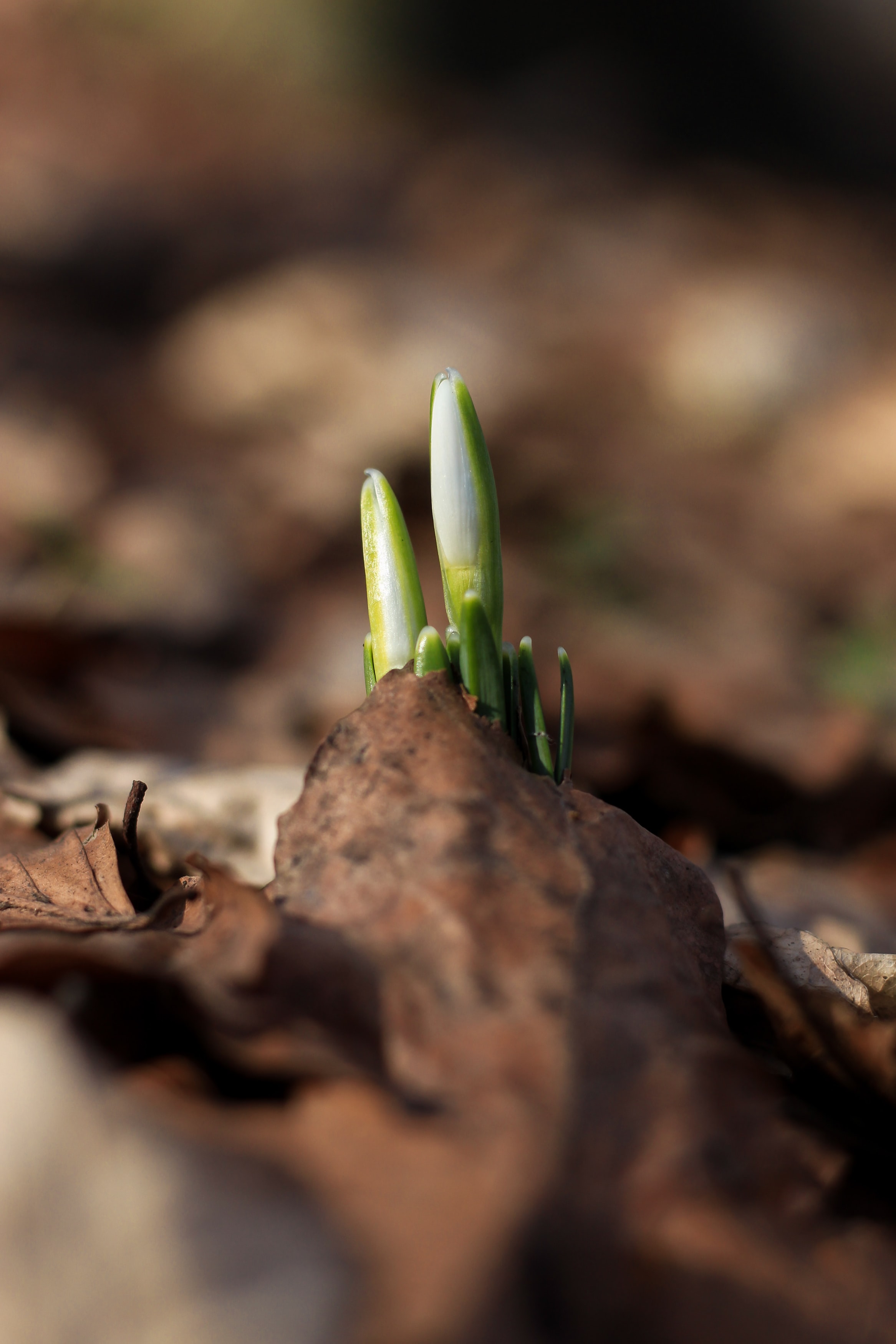Thoughts on the meaning of spectacle during Imbolc.

(Image description: A photo of white flowers poking through the underbrush. The flowers are closed with brown leaves in the foreground and more debris beyond.) Credit: Photo by Valentin Salja on Unsplash
In an era of instant gratification and never-ending trends, the concept of spectacle came to mind in an offhand conversation. Some people seem like they’re on a constant hamster wheel of viewing, interacting, and following. In the season of Imbolc, there is another form of spectacle afoot.
I’m as guilty of focusing on social media as the next person. However, the start of Imbolc occurred with the recent new moon. I haven’t done my celebrations for it yet, but I made a mental note of it to aid in remembering that I’m in Brighid’s time right now.
Taking time to observe and recognize the subtle changes of deities and nature is seen in the practice of custodia oculorum, Latin for custody of the eyes. The practice is detailed through a Polytheist lens by Rebecca Korvo in Polytheistic Monasticism: Voices from Pagan Cloisters.
It is the time of recognizing the small details of Her arrival, a spectacle in its own right.
The days are still cold and dreary, but they oscillate to warmer temperatures as well. Already, a couple of small, white flowers have bloomed in the front yard. I’ve seen these kinds of flowers since childhood and always looked forward to seeing them.
Up until recently, I had no idea what the name of the flower was. It’s known as crow poison or false garlic. The former makes me wince, as I’m fond of corvids. Despite the name, I can still appreciate its presence when it blooms. It grows in the spring and the fall, so the flower indicates the change of seasons twice a year.
This flower somewhat reminds me of the snowdrop because of its early vernal growth and its color. The false garlic is a generally hardy plant that’s mostly able to endure the remaining chilly weather.
Coming back to the idea of a spectacle, I sense that Brighid’s return is less of a grand entrance than it is more of a gradual waking up. Power doesn’t need flash to display its potency. Her life-giving power can be subtle but no less significant.
Similarly, snow drops and false garlic are beautiful to look at, but they are both toxic plants. Nature has a way of creating beauty but also defense mechanisms for plants, in order to prevent them from being eaten. It reminds me of nature’s elements of life and death intermingling in each living thing.
Imbolc is a strangely fragile, yet dangerous time. In times past, it was a bit of hope after hard winters, a liminal point in time that warmer days were ahead. With the advent of modern electricity, we can take the relative safety for granted, as we’re mostly able to trust that we’ll be able to remain warm. However, there’s always a risk of that power going out; there’s still the need for being prepared for harsh weather.
With Imbolc Eve about a week away, continuing to watch nature shift toward the next season is important. Weather divination has always had its place during Imbolc, so that farmers would know when to sow the seeds for harvest in the autumn. While I don’t think I will be able to predict what the weather will be like later this year, it’s worth noting the environment around me.
As always, I plan to make a bed for the Brighid doll, lay out the various brats (Brighid’s mantles I’ve been given) for blessing, and give offerings to Her to show hospitality during Her visit. There are other festivities I want to do, but I’ll discuss that more in the next post.
Happy Imbolc Season!
Leave a Reply